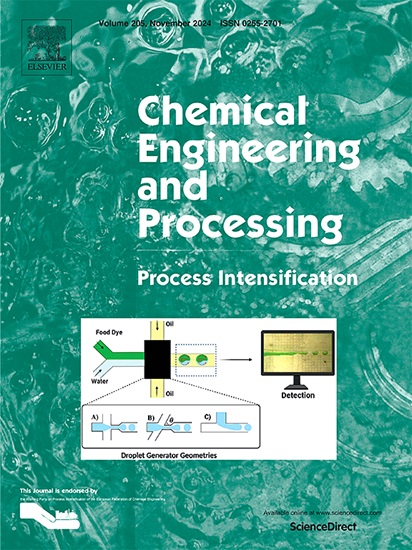Desalination systems for minimal and zero liquid discharge purposes: A review
IF 3.8
3区 工程技术
Q3 ENERGY & FUELS
Chemical Engineering and Processing - Process Intensification
Pub Date : 2025-07-13
DOI:10.1016/j.cep.2025.110442
引用次数: 0
Abstract
Freshwater reserves are being depleted as a result of natural and production processes, including industrialization, agriculture, and rapid population growth. Water scarcity can be effectively compensated for with various desalination techniques. However, the release of high concentrate brine from the desalination systems is the major environmental concern. As such, minimal or zero liquid discharge (MLD or ZLD) desalination techniques are vital for high water recovery and zero waste production. This study aims to review recent literature on the use and management of brine from various sectors of brine production and seawater desalination industries using MLD and ZLD technologies. Thermal, membrane, and hybrid desalination systems are also reviewed with a focus on highlighting the operating principles, advantages, and challenges. It can be concluded that hybrid systems have the lowest specific energy consumption (SEC) and cost compared to membrane and thermal systems. Multi-effect desalination/multi-stage flash (MED-MSF) has the lowest SEC of 1.107 kWh.m−3 and a water recovery of 98 %. Furthermore, ZLD desalination systems consume less energy when pretreatment techniques are applied before the thermal process. The hybrid MD-MSF-Cr process has the lowest cost with a cost of 0.62 $.m−3 (with a water recovery of 89 %).

用于最小和零液体排放目的的海水淡化系统:综述
由于自然和生产过程,包括工业化、农业和人口的迅速增长,淡水储备正在枯竭。水资源短缺可以通过各种海水淡化技术得到有效补偿。然而,从海水淡化系统中释放高浓度盐水是主要的环境问题。因此,最小或零液体排放(MLD或ZLD)海水淡化技术对于高水回收率和零废物产生至关重要。本研究旨在回顾近年来有关卤水生产和海水淡化行业各部门使用MLD和ZLD技术使用和管理卤水的文献。热、膜和混合海水淡化系统也进行了回顾,重点强调了工作原理、优势和挑战。与膜系统和热系统相比,混合系统具有最低的比能量消耗(SEC)和成本。多效脱盐/多级闪蒸(MED-MSF)的SEC最低,为1.107 kWh。M−3和98%的水回收率。此外,在热处理之前应用预处理技术时,ZLD脱盐系统消耗的能量更少。MD-MSF-Cr混合工艺成本最低,成本为0.62美元。M−3(水回收率89%)。
本文章由计算机程序翻译,如有差异,请以英文原文为准。
求助全文
约1分钟内获得全文
求助全文
来源期刊
CiteScore
7.80
自引率
9.30%
发文量
408
审稿时长
49 days
期刊介绍:
Chemical Engineering and Processing: Process Intensification is intended for practicing researchers in industry and academia, working in the field of Process Engineering and related to the subject of Process Intensification.Articles published in the Journal demonstrate how novel discoveries, developments and theories in the field of Process Engineering and in particular Process Intensification may be used for analysis and design of innovative equipment and processing methods with substantially improved sustainability, efficiency and environmental performance.

 求助内容:
求助内容: 应助结果提醒方式:
应助结果提醒方式:


